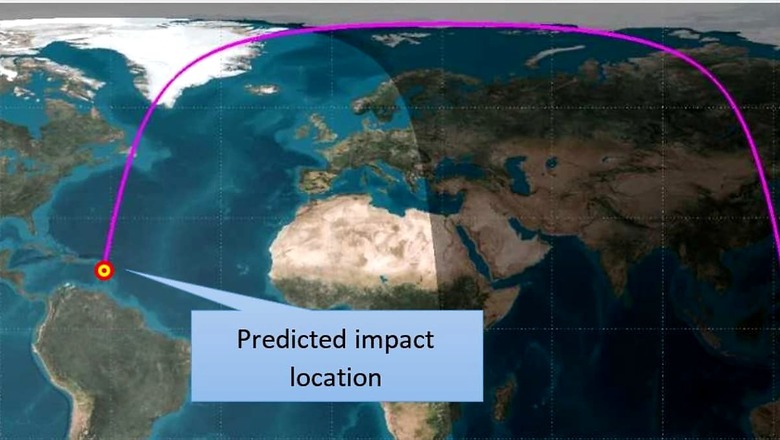
views
After completing a successful mission in 2017, the upper-stage of ISRO’s PSLV has harmlessly plunged into the North Atlantic Ocean after orbiting the Earth for eight years. With this, the Indian Space Research Organization (ISRO) has taken another step towards its 2030 pledge to ensure that its missions leave no debris behind in space.
The rocket, PSLV- C37, was launched in February 2017 and became ISRO’s first-ever rocket to carry as many as 104 satellites, including the main payload – Cartosat-2D, an Earth-observation satellite which continues to scan the planet.
The upper-stage (PS4) of rockets usually becomes defunct after successfully injecting the satellites. But it continues to orbit Earth for several years and eventually becomes junk. Sometimes, it can even break apart in the orbit resulting in hundreds of pieces forming a cloud of debris, which may pose risk to astronauts in space, or may collide with other satellites.
The space agencies, therefore, need to reduce its orbit until it gradually reaches a point when the atmospheric drag forces it to re-enter the Earth’s atmosphere. It is also passivated to remove any left-over propellant fuel and drain any batteries to prevent any accidental break-up during the re-entry.
In this mission, ISRO had already lowered the orbit of PS4 soon after the satellites got inserted and left it at a nearly-circular orbit of around 470 x 494 km. It was being tracked by the US Space Command as well as ISRO until this October when it reached as low as 134 x 148 km. ISRO’s recently set-up System for Safe and Sustainable Operations Management (IS4OM) predicted its re-entry into the Earth’s atmosphere in the first week of October. The US Space Command has confirmed that the re-entry took place on October 6 at 9:19 pm, and it plunged into the North Atlantic Ocean.
DEBRIS-FREE SPACE BY 2030
ISRO has been planning its space missions in a way that they leave zero debris in space. Its long-term plan is to ensure that the residual orbital lifetime for the upper-stage of its rockets be reduced to less than five years – as is being done in its recent PSLV missions.
This is also part of ISRO’s recent initiative of Debris-Free Space Mission by 2030 announced in April this year. The initiative calls upon space-faring nations to ensure that all launch missions be planned in a manner that the defunct stages of any spacecraft are brought to Earth through a controlled re-entry after their operational life ends.
“We need to keep launching satellites, but we have also decided that we will not litter space. So, once the satellites stop functioning, we will bring them to Earth, and ensure there is no collision or explosion in space,” said the ISRO chief S Somanath.
The Inter-Agency Space Debris Coordination Committee (IADC) recommends that the post-mission life orbital life of any defunct object in the Low Earth Orbit (LEO) must be less than 25 years.




















Comments
0 comment